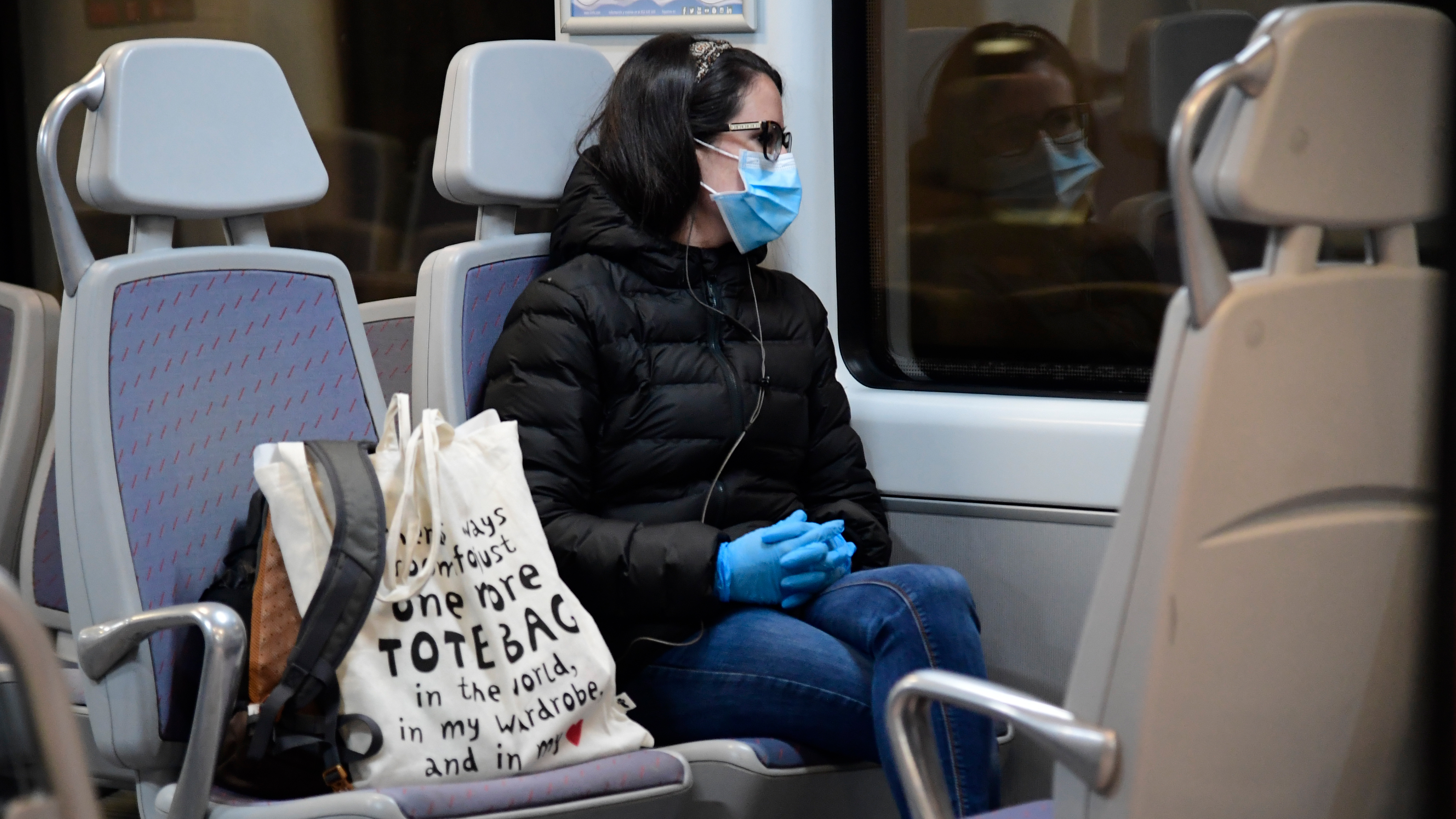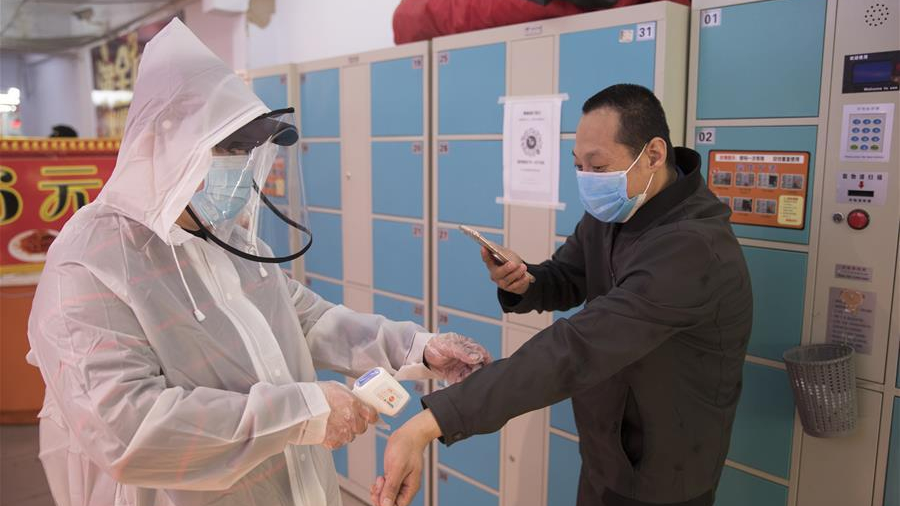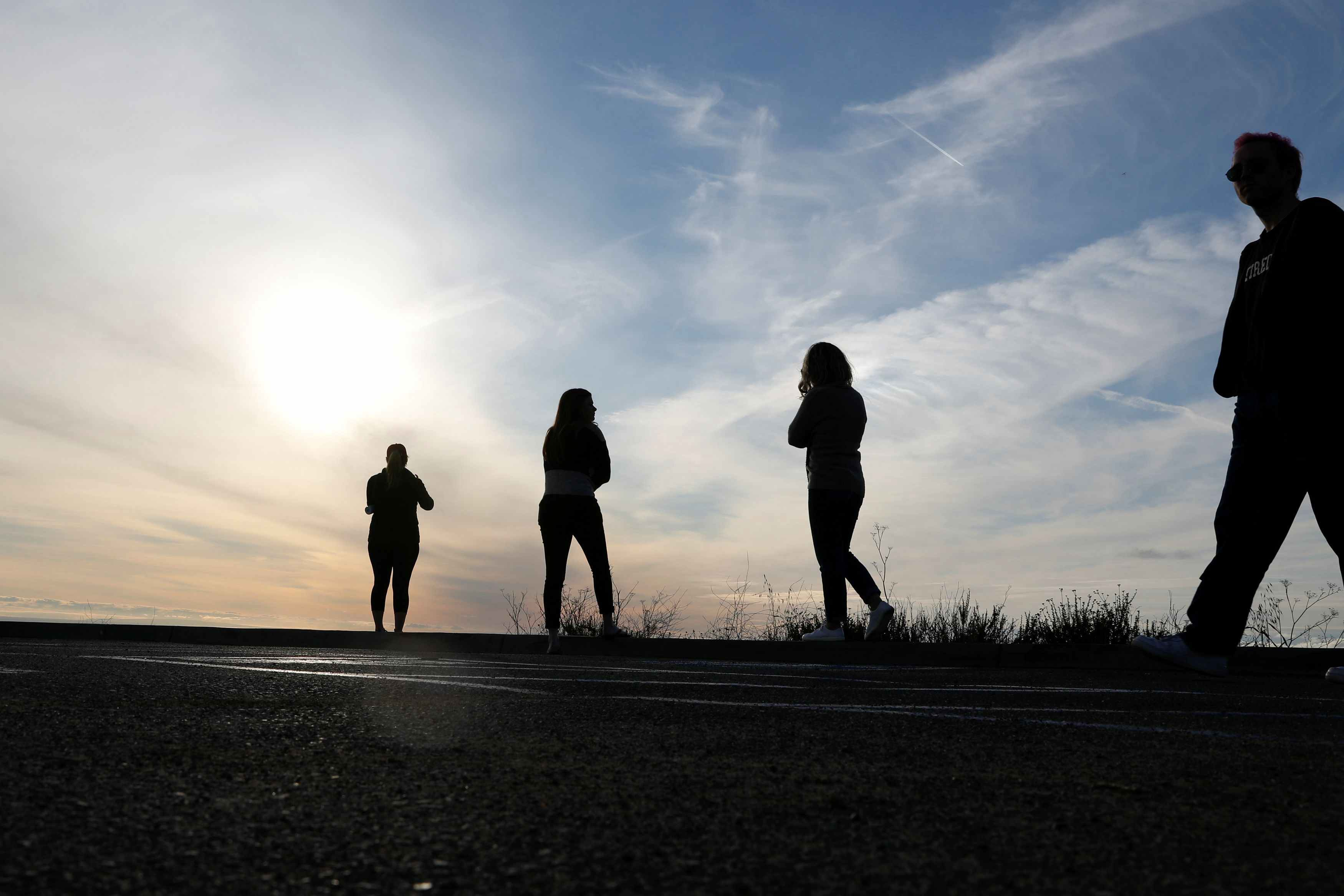"I just feel naked if I forget to wear a mask when going out," a strange sentence which has become normal in the post-COVID-19 era.
But can we really go back to "normal" when struggling to balance public health and social recovery?
Reopening: Walking a tightrope, tentatively
As the number of COVID-19 cases are still increasing - over 3.3 million so far worldwide - the process of reopening is doomed to be full of twists and turns.
The United States, in particular, saw disputes heating up among President Donald Trump, a number of Democratic governors who are slow to reopen their states, and most Americans.
Trump announced guidelines on April 16 that recommend a three-phase approach for states and counties to reopen their economies by May 1, but 72 percent of Americans, including 55 percent of Republicans, 88 percent of Democrats and 70 percent of independents, support quarantine measures remaining in effect until "doctors and public health officials say it is safe," according to a Reuters-Ipsos survey.
"The success of the reopening strategy depends a lot on its health consequences. If states reopen and there is no major spike in cases, that will be a win for that area. But if there is a spike upwards in the number of cases and the fatality rate, that will be very problematic for Trump. It will look like he traded lives for the reopening," said Brookings Institution Senior Fellow Darrell West.
Meanwhile, a host of countries across Europe have also started easing their coronavirus lockdowns while watching keenly to see if there is a surge of cases.
For instance, Spain, which has been implementing some of the world's toughest containment measures since 14 March, with children banned from going outside for six weeks, has announced a four-phase plan to lift its stringent coronavirus lockdown and return to a "new normality" by the end of June.

The announced lockdown measures in Spain are to be loosened, allowing some non-essential workers to return to their jobs. /AFP
The announced lockdown measures in Spain are to be loosened, allowing some non-essential workers to return to their jobs. /AFP
If that pattern runs well, it will push more governments to take steps towards reopening, and also encourage more countries to start down a similar path, but any sign that loosening restrictions is causing the virus to spread further could result in old rules being re-implemented.
A lesson from China: be cautiously optimistic
Though there is no playbook for successfully reopening, China, where the virus was first identified and reported in December, is further ahead in the game.
By April 15, about 84 percent of small- and medium-sized enterprises (SMEs), the most sensitive to weaker consumer demand, had resumed operations.
Moreover, almost three months after January 24, Beijing lowered its emergency response to the coronavirus from the top level to the second level on April 30, the latest sign of social order restoration as the epidemic conditions have been eased.

A man receives health code and temperature check at the entrance of a supermarket in Suifenhe, northeast China's Heilongjiang Province, April 17, 2020. /Xinhua
A man receives health code and temperature check at the entrance of a supermarket in Suifenhe, northeast China's Heilongjiang Province, April 17, 2020. /Xinhua
The May Day holiday is a good opportunity for people to return to their normal leisure time.
With real-name reservation systems to control the number of visitors and visiting hours, most museums, libraries, art galleries and parks in Beijing reopened on Friday, the first day of the five-day May Day holiday.
The Yellow Crane Tower, a landmark tourist attraction in Wuhan, the hardest-hit Chinese city in the outbreak, also reopened to the public after being closed for more than three months.
In two weeks' time, the country will see its postponed political season return – China's annual Two Sessions will open on May 21 and 22.
Read more:
Two Sessions in 2019
To maintain the positive trend in containing the pandemic and resuming work and production, China has always stressed maintaining vigilance with strict regular prevention measures, such as adopting a QR code for coronavirus tracking and increasing nucleic acid testing.
Ready for the new normal?
The gradual resumption of production in China is a good sign but there is still too much unknown about the virus, such as whether there is a limit on acquired immunity and whether the virus will become seasonal, to declare a final victory.
The World Health Organization has warned that COVID-19 will stalk the planet for a long time to come. The United Nations has also said that the world would only return to normal once a vaccine for the viral strain is found.

People practice social distancing as they visit a park during the global outbreak of the coronavirus disease (COVID-19) in San Marcos, California, U.S., March 21, 2020. /Reuters
People practice social distancing as they visit a park during the global outbreak of the coronavirus disease (COVID-19) in San Marcos, California, U.S., March 21, 2020. /Reuters
More things will turn normal in the near future, such as mass temperature checks, monitoring of international travelers, control of mass gatherings such as concerts and sporting events, smaller class sizes and so on.
Perhaps, these changes will be easy to get used to in our daily life, but will it also be easy to embrace the changes in other aspects, such as being less touchy-feely and far more wary after practicing social distancing for a long time?
(With input from agencies)